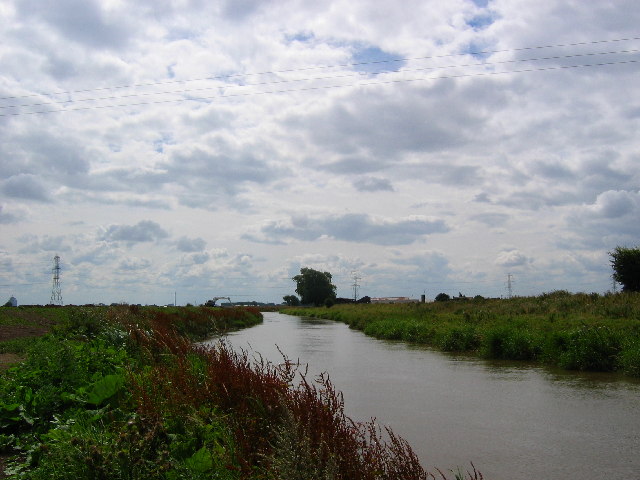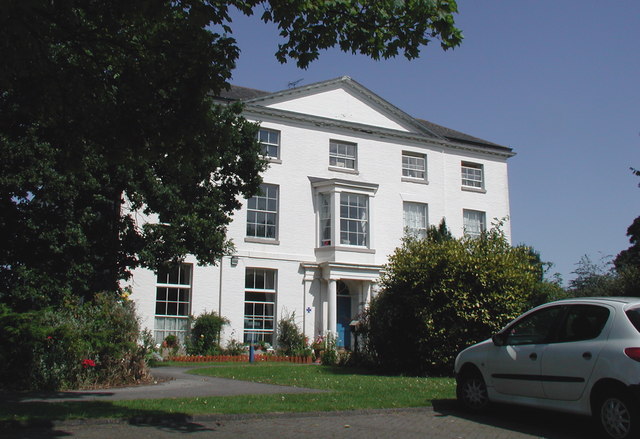|
Wawne
Wawne , also spelled Waghen, is a small village and civil parish in the East Riding of Yorkshire, England. The village is situated approximately north of Hull city centre and south-east of Beverley on the east bank of the River Hull. The civil parish consists of the village of Wawne and the hamlet of Meaux. According to the 2011 UK census, Wawne parish had a population of 975, an increase on the 2001 UK census figure of 878. History Wawne is first mentioned (as ''Wagene'') in the Domesday Book in 1086. The name is from an assumed Old English word ''wagen'', meaning "shaking" (probably connected with Modern English "wag" or the dialect "quag"), and is therefore believed to mean "shaking ground" or "quagmire". In the early Middle Ages Wawne was a very large parish, including Sutton-on-Hull and Stoneferry. Sutton became a separate parish some time in the Middle Ages. In 1155, Stephen the son of William, Earl of Aumale, confirmed that his father had made a gift of the Chur ... [...More Info...] [...Related Items...] OR: [Wikipedia] [Google] [Baidu] |
Wawne Ferry And Holderness Hounds 1910 (archive Ref PO-1-146-4) (25135803542)
Wawne , also spelled Waghen, is a small village and civil parish in the East Riding of Yorkshire, England. The village is situated approximately north of Hull city centre and south-east of Beverley on the east bank of the River Hull. The civil parish consists of the village of Wawne and the hamlet of Meaux. According to the 2011 UK census, Wawne parish had a population of 975, an increase on the 2001 UK census figure of 878. History Wawne is first mentioned (as ''Wagene'') in the Domesday Book in 1086. The name is from an assumed Old English word ''wagen'', meaning "shaking" (probably connected with Modern English "wag" or the dialect "quag"), and is therefore believed to mean "shaking ground" or "quagmire". In the early Middle Ages Wawne was a very large parish, including Sutton-on-Hull and Stoneferry. Sutton became a separate parish some time in the Middle Ages. In 1155, Stephen the son of William, Earl of Aumale, confirmed that his father had made a gift of the Churc ... [...More Info...] [...Related Items...] OR: [Wikipedia] [Google] [Baidu] |
Thearne
Thearne is a hamlet in the East Riding of Yorkshire, England, in the civil parish of Woodmansey. It is situated approximately south-east of Beverley to the east of the A1174 road from Hull to Beverley. It also lies just to the west of the River Hull. Geography Thearne lies between the A1174 Beverley to Hull road, and the River Hull, around south-east of Beverley. The original village is located at the meeting of three minor roads: Thearne Road (now Ferry Lane) and Thearne Lane (formerly Old Wire Carr Road) to the west, and Ferry Lane to the east. The modern place includes additional housing along the A1174.Ordnance Survey. 1:25000. 2006; ''also'' OS Open DataOrdnance Survey. 1852 Sheet 211 The area around Thearne is primarily agricultural, low lying (less than above sea level), with extensive drainage. There are several developments of glasshouse based agriculture in the area. Governance The hamlet was in the Beverley and Holderness parliamentary constituency until the ... [...More Info...] [...Related Items...] OR: [Wikipedia] [Google] [Baidu] |
Sutton-on-Hull
Sutton-on-Hull (also known as Sutton-in-Holderness) is a suburb of the city of Kingston upon Hull, in the ceremonial county of the East Riding of Yorkshire, England. It is located north east of the city centre and has the B1237 road running through it which connects the A165 road with the A1033. History Sutton is mentioned in the Domesday Book as having 20 households and being chiefly owned by the Archbishop of York. Its name in the book is ''Sudtone'' which is Anglo-Saxon in origin and means ''Southern farmstead''. The village acquired its name as the western part of the manor of Sutton was bordered by the River Hull. The area sits on a ridge of land between and high in a flat landscape; Hull City Council describes the area as having the only appreciable hills within the city limits. The village was also in its own parish which developed alongside, but separate from the nearby town of Hull. During the 18th century, the southern part of the village became part of the Muni ... [...More Info...] [...Related Items...] OR: [Wikipedia] [Google] [Baidu] |
Meaux, East Riding Of Yorkshire
Meaux (pronounced // "") is a hamlet in the East Riding of Yorkshire, England. It is about north of Hull city centre and east of Beverley. Meaux is part of the civil parish of Wawne. Meaux Abbey was a Cistercian Abbey near Meaux. According to ''A Dictionary of British Place Names'' the name 'Meaux' is derived from Old Norse ''Mel-sǽr'', meaning " Sandbank-pool". Baines' ''History, Directory and Gazetteer of the County of York'' states that William the Conqueror gave the Meaux lordship to Gamel, who was born at Meaux in what is modern day France, a name he gave to the Holderness settlement which he populated with his own people. However, the ''Domesday Book'' records that in 1066 Ulf Fenman held the lordship, this transferring in 1086 to Drogo de la Beuvrière, who was also Tenant-in-chief to William I. Meaux is recorded in the ''Domesday Book'' as "Melse". At the time of the survey the settlement was in the Middle Hundred of Holderness in the East Riding of Yorkshire. Me ... [...More Info...] [...Related Items...] OR: [Wikipedia] [Google] [Baidu] |
Stoneferry
Stoneferry (''archaic'' Stone-Ferry, or Stone ferry) is a suburb of Kingston upon Hull, East Riding of Yorkshire, England. It was formerly a small hamlet on the east bank of the River Hull, the site of a ferry, and, after 1905, a bridge. The area is primarily industrial, and is situated on the east bank of the river, as well as close by areas on the west bank. Stoneferry Road (A1033 section) travels south through Stoneferry and Wilmington towards the centre of Hull. Ferry Lane (eastern end of the A1165) runs east for a short distance from Stoneferry bridge to meet Stoneferry Road. Geography The boundaries of the Stoneferry area are approximately formed by the River Hull to the west beyond which are the areas of Sculcoates (south-west) and Clough Road/ Newland (west); to the north is the post 1970s Sutton Fields Industrial, with Bransholme housing estate beyond. To the north-east and east are the housing estates of Sutton Ings and Garden Village; whilst to the south is the indust ... [...More Info...] [...Related Items...] OR: [Wikipedia] [Google] [Baidu] |
River Hull
The River Hull is a navigable river in the East Riding of Yorkshire in Northern England. It rises from a series of springs to the west of Driffield, and enters the Humber Estuary at Kingston upon Hull. Following a period when the Archbishops of York charged tolls for its use, it became a free navigation. The upper reaches became part of the Driffield Navigation from 1770, after which they were again subject to tolls, and the section within the city of Hull came under the jurisdiction of the Port of Hull, with the same result. Most of its course is through low-lying land that is at or just above sea level, and regular flooding has been a long-standing problem along the waterway. Drainage schemes to alleviate it were constructed on both sides of the river. The Holderness Drainage scheme to the east was completed in 1772, with a second phase in 1805, and the Beverley and Barmston Drain to the west was completed in 1810. Since 1980, the mouth of the river has been protected by a tid ... [...More Info...] [...Related Items...] OR: [Wikipedia] [Google] [Baidu] |
Victoria County History
The Victoria History of the Counties of England, commonly known as the Victoria County History or the VCH, is an English history project which began in 1899 with the aim of creating an encyclopaedic history of each of the historic counties of England, and was dedicated to Victoria of the United Kingdom, Queen Victoria. In 2012 the project was rededicated to Elizabeth II, Queen Elizabeth II in celebration of her Diamond Jubilee year. Since 1933 the project has been coordinated by the Institute of Historical Research in the University of London. History The history of the VCH falls into three main phases, defined by different funding regimes: an early phase, 1899–1914, when the project was conceived as a commercial enterprise, and progress was rapid; a second more desultory phase, 1914–1947, when relatively little progress was made; and the third phase beginning in 1947, when, under the auspices of the Institute of Historical Research, a high academic standard was set, and pr ... [...More Info...] [...Related Items...] OR: [Wikipedia] [Google] [Baidu] |
2007 United Kingdom Floods
A series of large floods occurred in parts of the United Kingdom during the summer of 2007. The worst of the flooding occurred across Scotland on 14 June; East Yorkshire and the Midlands on 15 June; Yorkshire, the Midlands, Gloucestershire, Herefordshire and Worcestershire on 25 June; and Gloucestershire, Herefordshire, Worcestershire, Oxfordshire, Berkshire and South Wales on 28 July 2007. June was one of the wettest months on record in Britain (see List of weather records). Average rainfall across the country was ; more than double the June average. Some areas received a month's worth of precipitation in 24 hours. It was Britain's wettest May–July period since records began in 1776. July had unusually unsettled weather and above-average rainfall through the month, peaking on 20 July as an active frontal system dumped more than of rain in southern England. Civil and military authorities described the June and July rescue efforts as the biggest in peacetime Britain. The Envi ... [...More Info...] [...Related Items...] OR: [Wikipedia] [Google] [Baidu] |
The Waggoners, Wawne - Geograph
''The'' () is a grammatical article in English, denoting persons or things that are already or about to be mentioned, under discussion, implied or otherwise presumed familiar to listeners, readers, or speakers. It is the definite article in English. ''The'' is the most frequently used word in the English language; studies and analyses of texts have found it to account for seven percent of all printed English-language words. It is derived from gendered articles in Old English which combined in Middle English and now has a single form used with nouns of any gender. The word can be used with both singular and plural nouns, and with a noun that starts with any letter. This is different from many other languages, which have different forms of the definite article for different genders or numbers. Pronunciation In most dialects, "the" is pronounced as (with the voiced dental fricative followed by a schwa) when followed by a consonant sound, and as (homophone of the archaic pron ... [...More Info...] [...Related Items...] OR: [Wikipedia] [Google] [Baidu] |
Historic England
Historic England (officially the Historic Buildings and Monuments Commission for England) is an executive non-departmental public body of the British Government sponsored by the Department for Digital, Culture, Media and Sport. It is tasked with protecting the historic environment of England by preserving and listing historic buildings, scheduling ancient monuments, registering historic Parks and Gardens and by advising central and local government. The body was officially created by the National Heritage Act 1983, and operated from April 1984 to April 2015 under the name of English Heritage. In 2015, following the changes to English Heritage's structure that moved the protection of the National Heritage Collection into the voluntary sector in the English Heritage Trust, the body that remained was rebranded as Historic England. The body also inherited the Historic England Archive from the old English Heritage, and projects linked to the archive such as Britain from Above, w ... [...More Info...] [...Related Items...] OR: [Wikipedia] [Google] [Baidu] |
National Heritage List For England
The National Heritage List for England (NHLE) is England's official database of protected heritage assets. It includes details of all English listed buildings, scheduled monuments, register of historic parks and gardens, protected shipwrecks, and registered battlefields. It is maintained by Historic England, a government body, and brings together these different designations as a single resource even though they vary in the type of legal protection afforded to them. Although not designated by Historic England, World Heritage Sites also appear on the NHLE; conservation areas do not appear since they are designated by the relevant local planning authority. The passage of the Ancient Monuments Protection Act 1882 established the first part of what the list is today, by granting protection to 50 prehistoric monuments. Amendments to this act increased the levels of protection and added more monuments to the list. Beginning in 1948, the Town and Country Planning Acts created the fir ... [...More Info...] [...Related Items...] OR: [Wikipedia] [Google] [Baidu] |
Listed Building
In the United Kingdom, a listed building or listed structure is one that has been placed on one of the four statutory lists maintained by Historic England in England, Historic Environment Scotland in Scotland, in Wales, and the Northern Ireland Environment Agency in Northern Ireland. The term has also been used in the Republic of Ireland, where buildings are protected under the Planning and Development Act 2000. The statutory term in Ireland is " protected structure". A listed building may not be demolished, extended, or altered without special permission from the local planning authority, which typically consults the relevant central government agency, particularly for significant alterations to the more notable listed buildings. In England and Wales, a national amenity society must be notified of any work to a listed building which involves any element of demolition. Exemption from secular listed building control is provided for some buildings in current use for worship, ... [...More Info...] [...Related Items...] OR: [Wikipedia] [Google] [Baidu] |






.png)

